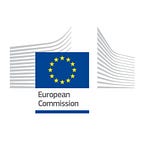Rohingya refugees: risking their lives to reunite with their families
Under the cover of darkness, a dilapidated fishing boat left a secluded strip of beach near the Bangladeshi city of Cox’s Bazar. On board, over 60 Rohingya refugees huddled together in preparation for the perilous journey across the Bay of Bengal to Malaysia. The group had joined an increasing number of Rohingya risking their lives in over-crowded, rickety vessels to escape persecution and dire poverty.
Among the passengers was Hosna*, travelling with her young son. Desperate to escape a life trapped in an overpopulated refugee camp, a group of smugglers had convinced the 36-year-old woman that it would only be a matter of days before she would rejoin her husband in the Malaysian capital, Kuala Lumpur.
After two days at sea, the vessel ran out of fuel, leaving the boat marooned near the beaches of southern Thailand.
“At night, the captain and the crew jumped off the boat and swam ashore,” Hosna says. “When the sun came out, we were discovered by the coast guard and taken ashore.”
She soon joined hundreds of other Rohingya who are kept in detention facilities or government-run shelters in Thailand.
To improve their living situation, the European Union and its humanitarian aid partner the International Organization for Migration provide healthcare and food, as well as training on hygiene and coronavirus prevention.
The Thai authorities have also allowed the children at the centre to attend local schools. Psychosocial assistance, including counselling and activities that help people improve their mental health and psychological well-being, is another critical need among the refugees.
“Life in these facilities can be very hard,” says Taheeni Thammannagoda, who oversees EU humanitarian programs in Asia and the Pacific. “Many of the stateless Rohingya end up spending several years in these centres, with no future in sight. Being separated from their families, combined with a loss of dignity and hope for a better and safe life, takes a heavy psychological toll on people who have already experienced trauma back home or on the arduous journey here.”
The EU provides vital humanitarian assistance to thousands of Rohingya refugees in Thailand, Malaysia and Indonesia, and has contributed some €237 million in humanitarian assistance in Myanmar and Bangladesh over the past decade.
The Rohingya, a stateless ethnic group, the majority of whom are Muslim, have faced discrimination and violence in Myanmar for decades, triggering waves of people fleeing into neighbouring Bangladesh.
Hosna’s ordeal started three years ago, when she was forced to flee a vicious campaign of ethnic cleansing in her village in Myanmar’s Rakhine state. The violence in August 2017 drove a staggering 745,000 people — including more than 400,000 children — from their homes in the largest exodus of Rohingya to date.
“Armed men came to our village and started firing their guns and poured petrol over our houses and fields, setting everything on fire,” Hosna recalls.
The future remains uncertain
Alongside a group of villagers, Hosna and her four-year-old son walked for three days to reach safety in Bangladesh. Her husband had fled poverty six years earlier and now ekes out a living as a day labourer in the Malaysian capital, Kuala Lumpur.
“Life in the camp was very hard without my husband to help me,” Hosna says. “After almost two years I felt exhausted and desperate and wanted to leave and reunite my family.”
Three years after the violence of 2017, the future for the Rohingya remains as uncertain as ever. Although governments from both countries have repeatedly vowed that a return of the Rohingya to Myanmar is imminent, there has been little progress.
The conditions in Rahkine state remain as dangerous and volatile as before the military crackdown in August 2017. Still denied Myanmar citizenship, over 120,000 Rohingya live in government-run displacement camps with severe restrictions on their freedom of movement.
Meanwhile, the camps in southern Bangladesh have long reached capacity: the Kutapalong camp near Cox’s Bazar now houses nearly one million people, making it the largest refugee camp in the world.
“The current situation is clearly not sustainable, and our humanitarian and advocacy support will be required for the foreseeable future,” Thammannagoda says. “Until we find durable solutions, all international and regional actors need to ensure a protective and dignified environment for the Rohingya, wherever they are.”
After over a year at the centre in southern Thailand, Hosna is happy that her son is able to attend school. But without the possibility to work and earn money, she says that her life is still on hold. Most painful of all, though, is the family separation.
“I want to reunite with my husband,” she says. “It doesn’t matter where — and even if it takes another 10 years.”
*Names have been changed.
Story by Peter Biro, Regional Information Officer, EU Civil Protection and Humanitarian Aid Operations
- Learn more about EU humanitarian aid in Myanmar/Burma
- Find out how the EU supports refugees in Bangladesh
- Learn more about EU humanitarian aid to refugees, migrants and internally displaced people (IDPs)
- Follow our Twitter account to get the latest: @eu_echo
